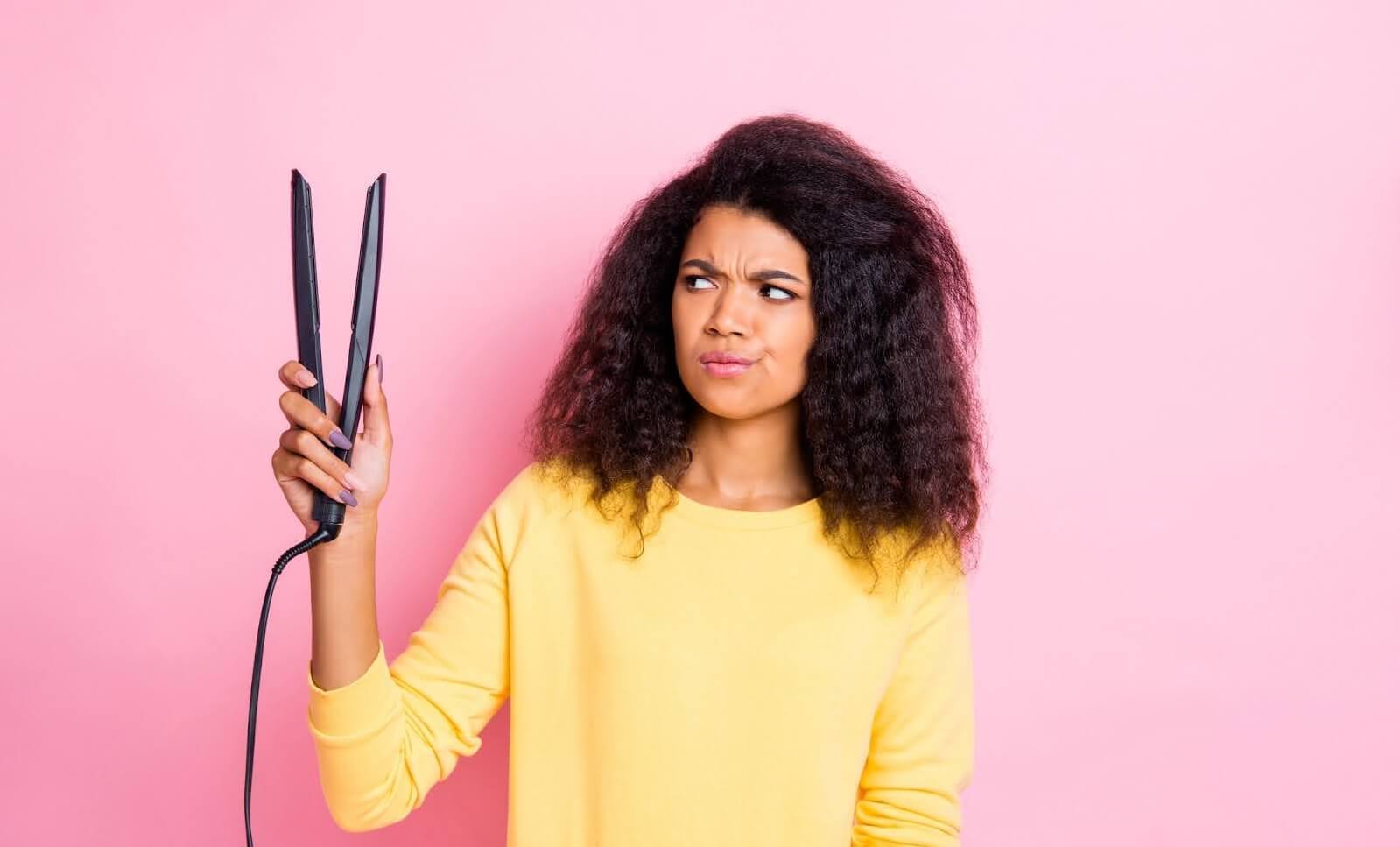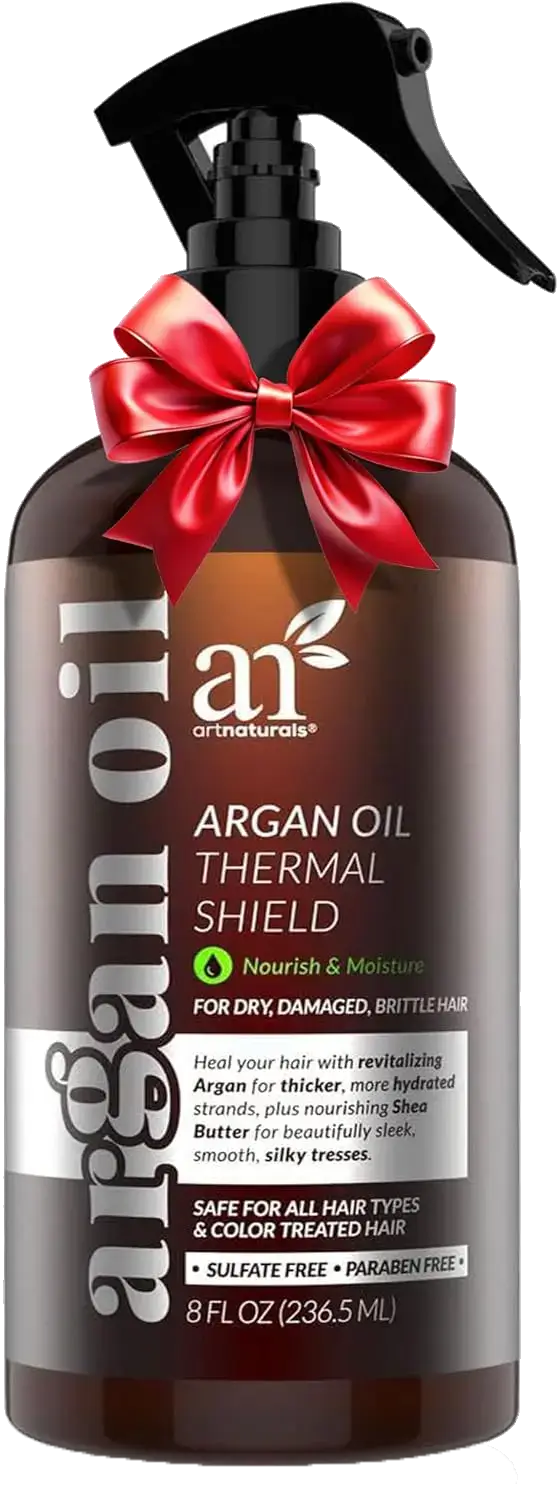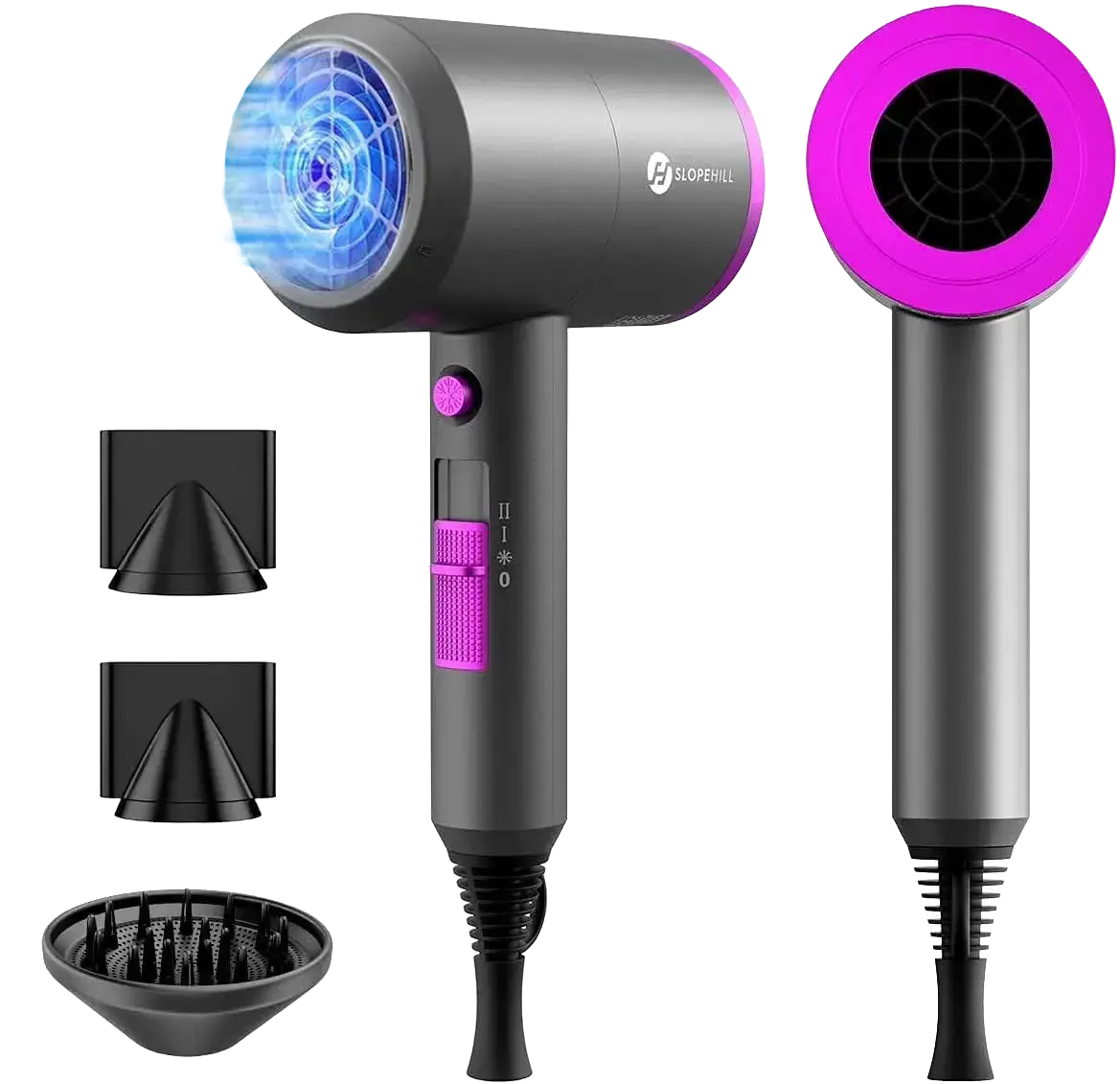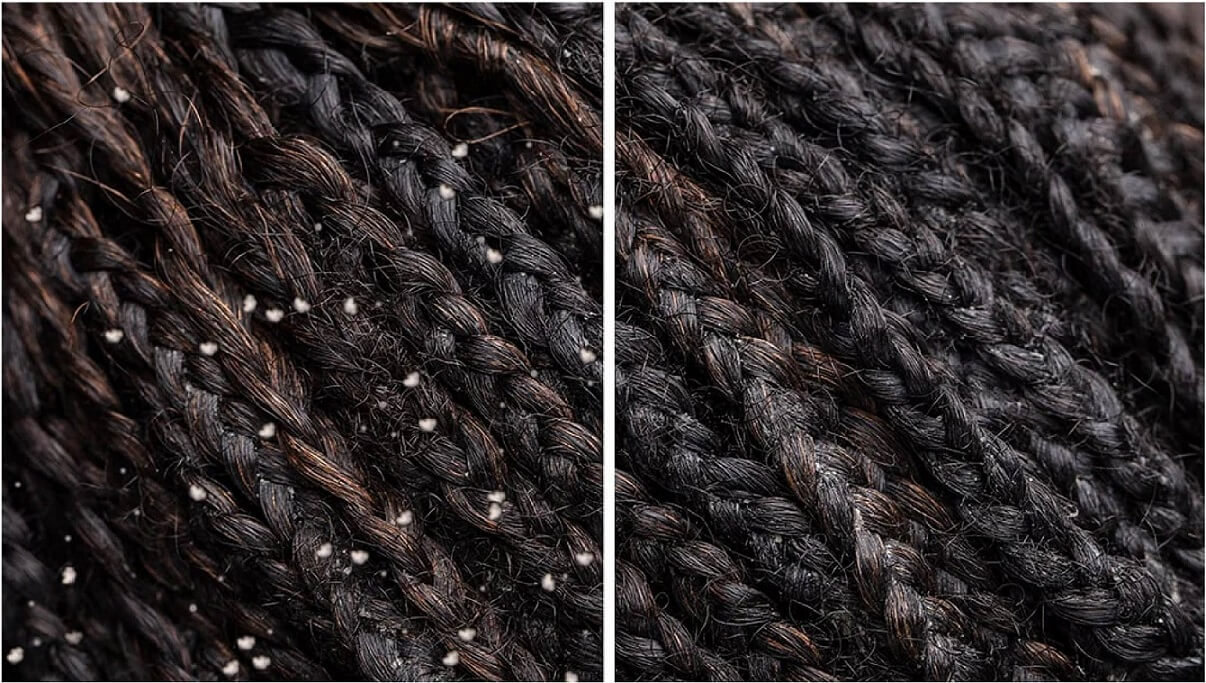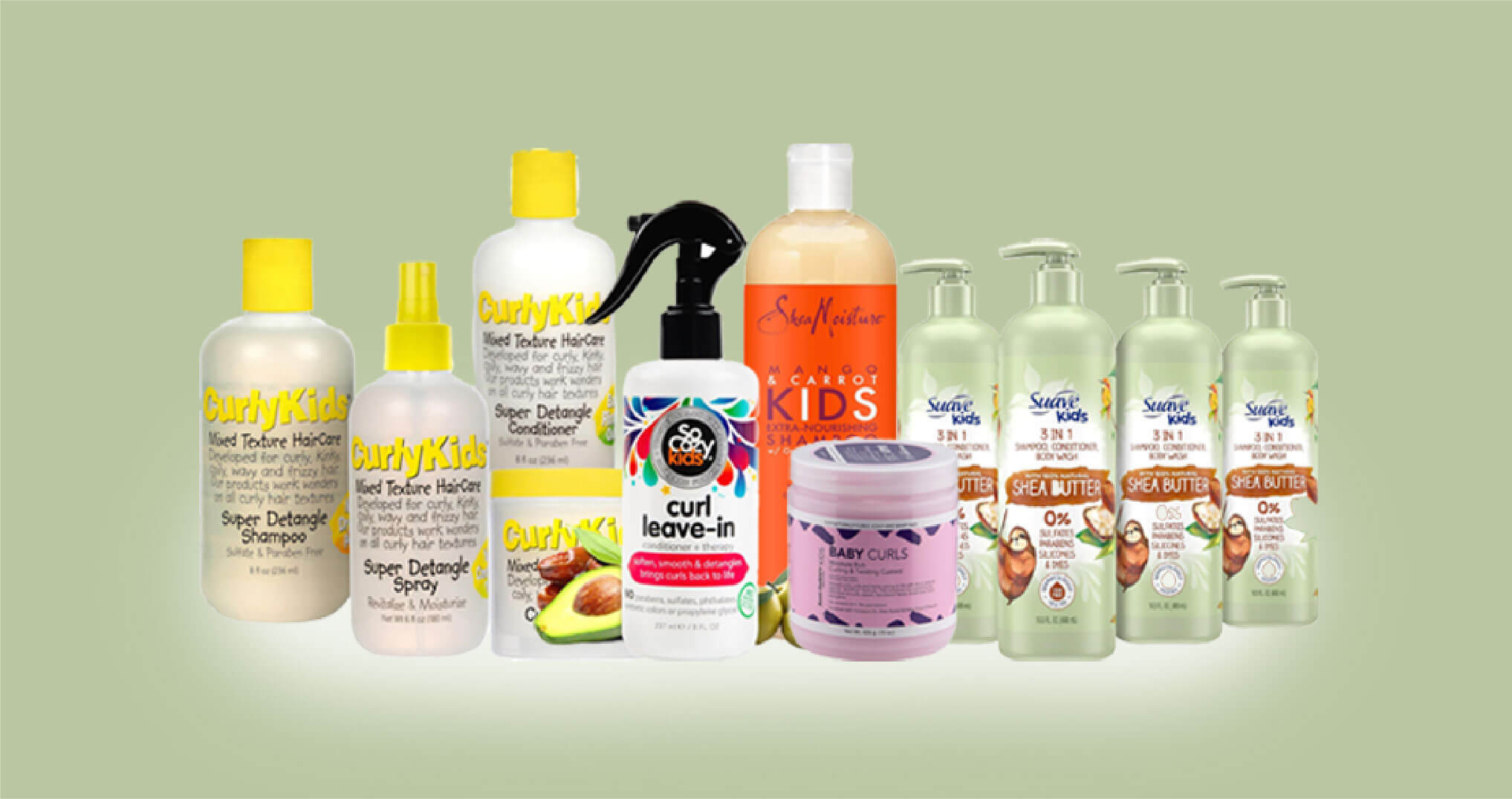Biracial hair is known for its unique texture, which can be a combination of curly, wavy, and straight strands. Many embrace their natural curls and waves, but it is always fun to switch things up sometimes! Unfortunately, the process may be more frustrating than fun if you don’t know how to straighten biracial hair.
Straightening biracial hair requires the right approach, products, and techniques to ensure that your hair stays healthy, smooth, and frizz-free. In this guide, we’ll walk you through every step to make sure you straighten like a pro!
Step-by-Step Guide for Healthy and Smooth Results
If you’re hoping to learn how to straighten biracial curly hair, you are in the right place. Here’s a comprehensive guide to taming frizzy hair and achieving healthy, nourished, straight hair.
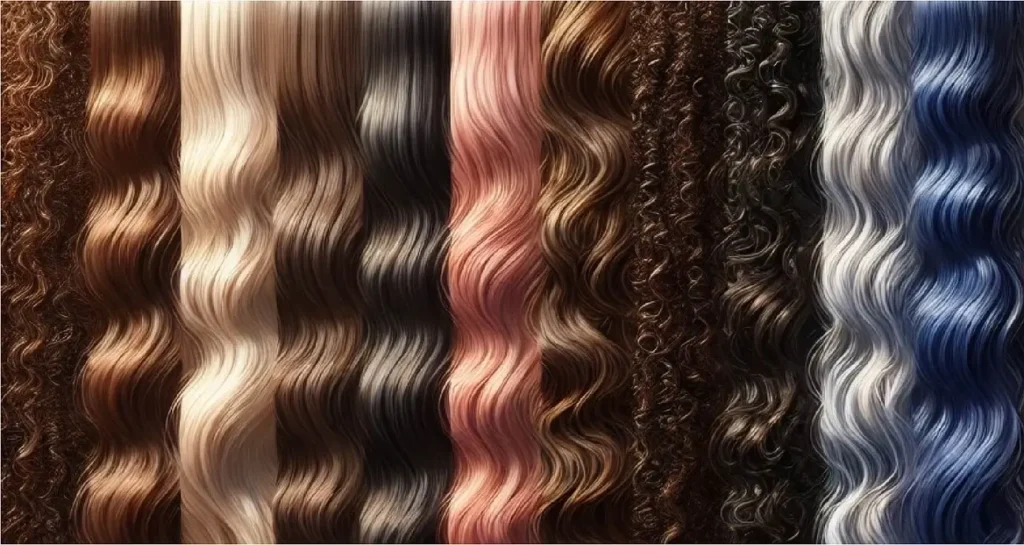
1. Understanding Biracial Hair
Before we dive into the straightening process, it’s essential to understand biracial hair. Biracial hair textures can vary widely. Imagine a spectrum with the straightest hair on one side and the curliest on the other. Biracial hair can fall anywhere on the spectrum.
However, the most common type of hair among biracial people varies from loose waves to tighter curls. A common quality of biracial hair is that it tends to be drier than other hair types. This is because natural oils have a more difficult time traveling down the twists and turns of each strand.
With that in mind, it’s crucial to prepare your hair properly before straightening it to avoid heat damage and maintain its health.
Tip: Wash your hair 2-3 times a week to prevent product buildup, but avoid overwashing, which can strip the scalp of its natural oils.
2. Prepping Your Hair for Straightening
The first step in preparing your hair is to wash and condition it.
Before using any heat styling tools, always start with clean and damp hair. Use a sulfate-free moisturizing shampoo to preserve the natural oils in your hair while cleansing it. Since biracial hair can be prone to dryness, you want to do everything possible to keep it hydrated.
Although you’ll find many great shampoos for biracial hair, we like the Pantene Pure & Clean Set for this application. The Pantene shampoo effectively removes excess oil and build-up in the hair. However, it also comes with a conditioner and Hair Mask Rescue Shot treatment. While the shampoo removes oils, the conditioner and mask bring hydration back into the hair.
Starting with well-hydrated hair ensures the heat won’t burn the hair strands as you straighten it. Heat can be damaging. Fortunately, Pantene’s hair mask will provide extra moisture to make the hair more manageable while straightening.
Next, apply a heat protectant.
While heat protectants are a must for anyone straightening their hair, they are even more critical for biracial hair. These products form a barrier between your hair and the high temperatures of your flat iron or blow dryer. Most importantly, they help prevent heat damage and dryness.
Look for a heat protectant that contains ingredients like silicone, which can coat your hair strands and seal in moisture. Apply the product evenly throughout your damp hair, focusing on the ends since they are more prone to split ends and dryness.
However, you must choose the proper heat protectant for your hair type. You may need a heavier protectant if you have thicker or coarser hair. Likewise, a lighter formula would be better for fine or wavy hair.
3. Dry Your Hair Thoroughly
Now that your hair is clean and prepped, you must dry it thoroughly. If you attempt to straighten damp hair, you risk frying your strands or leaving them with an uneven finish.
We recommend air-drying your hair. However, we understand that this is a slow process. For quicker drying, use a blow dryer with a concentrator nozzle to direct the airflow. Also, use the lowest heat setting to avoid unnecessary damage.
We could suggest many different blow dryers that have the nozzles you need for drying biracial hair. But I understand that most people don’t want to shell out $300+ on a hair dryer. The Slopehill Ionic Hair Dryer works amazingly well for drying our biracial children’s hair. It has three heat settings and comes with two concentrator nozzles and a diffuser.
Best of all, it is affordable. That way, you can get a quick and convenient dry without damaging the hair before straightening.
Tip: While blow-drying, use a round brush to gently smooth out your hair, working section by section. This technique helps minimize frizz and gives you a sleeker look before using a flat iron.
Once your hair is dry, give it a few minutes to cool down. Since heat can cause damage, you should let your hair cool to room temperature before applying further heat. This also ensures the hair strands are ready to lock in the straightened shape.
4. Choosing the Right Flat Iron
The quality of flat iron you use to straighten your hair makes a significant difference. A low-quality flat iron can cause heat damage and make straightening the hair difficult. When selecting a flat iron for biracial hair, consider the following factors:
Plate Material: For biracial hair, choose a flat iron with ceramic or tourmaline plates. Plates with these materials distribute heat evenly and help reduce frizz. Furthermore, these materials release negative ions, which make hair shinier and smoother.
Temperature Control: Choose a flat iron with adjustable heat settings. Biracial hair can vary in texture, so you must choose a temperature that suits your specific hair type. Start with a lower heat setting, around 300°F (150°C), and increase it if needed.
Plate Width: If you have thicker or coarser hair, choose a flat iron with wider plates to cover more hair. For fine or wavy hair, a narrower plate is more straightforward to maneuver and offers more control.
Tip: Avoid using flat irons that get too hot. Straightening with high temperatures can lead to permanent damage, making your hair more prone to breakage and frizz.
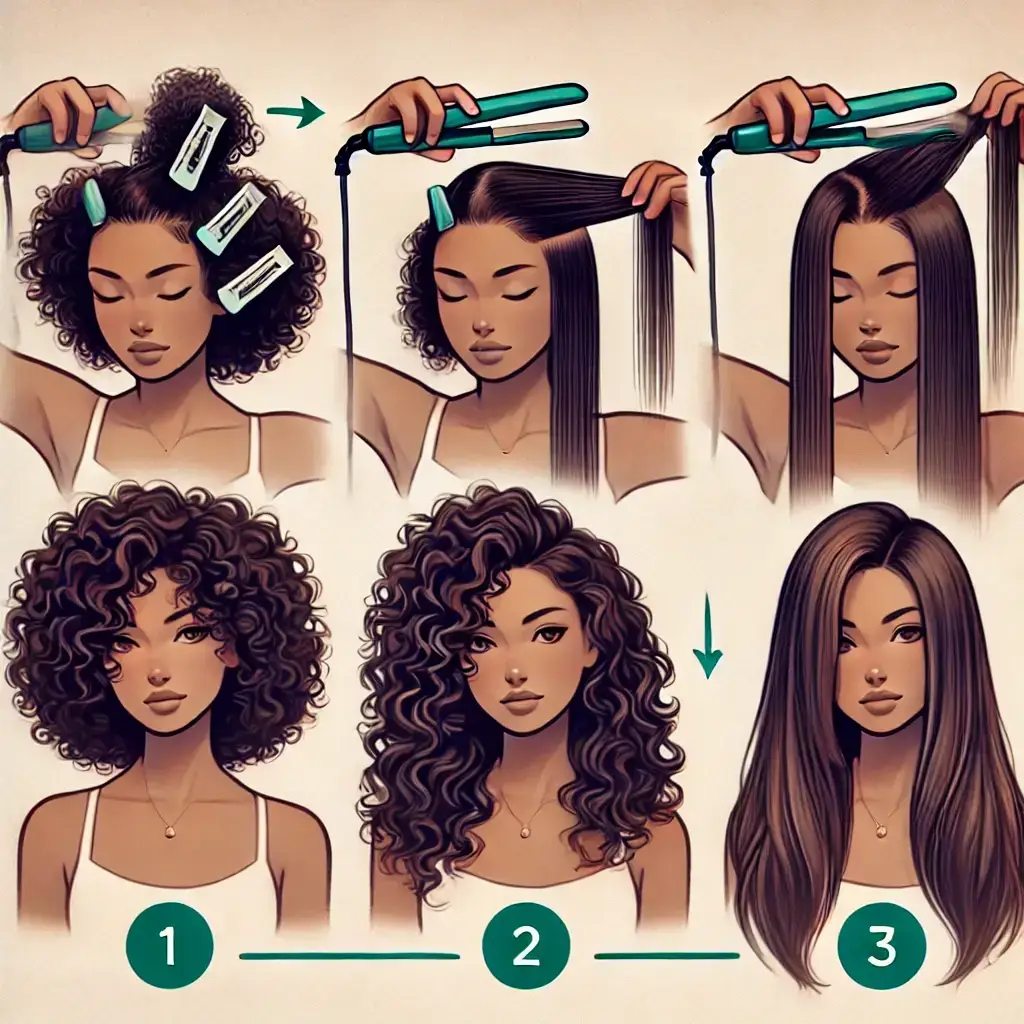
5. Straightening Your Biracial Hair
With prepped hair and the right tools, you’re finally ready to start straightening. Follow these steps to achieve sleek, straight hair without compromising its health.
First, Section Your Hair.
Divide your hair into small, manageable sections. This will ensure that you straighten every part of your hair evenly. For biracial hair, it is essential to section it carefully. The curl pattern can vary, so each section needs special care.
Use clips or hair ties to keep each section separate. Start from the bottom layers of your hair and work your way up to the top. Straightening the bottom first lets you avoid flattening hair you’ve already straightened.
Then, Straighten One Section at a Time
Take a small section of hair (about 1-2 inches wide) and place the flat iron at the roots. Slowly glide the iron down the length of the hair, following the direction of the hair shaft. Make sure to move the flat iron at a consistent pace to avoid uneven straightening.
For tighter curls, you may need to pass the flat iron over the section twice or more to straighten the hair completely. For loose waves, a single pass should be enough.
Tip: Avoid clamping the flat iron too tightly, as this can create unnecessary tension and lead to breakage. Instead, gently squeeze the iron and glide it smoothly through each section.
Finally, Continue Straightening in Small Sections
Work your way around your entire head, continuing to straighten small sections. Once you finish with the bottom layers, move to the top sections. Be careful not to overheat the crown of your head since this area is more delicate and damage-prone.
6. Post-Straightening Care
After straightening your biracial hair, it’s essential to maintain its sleekness and health.
To add shine and lock in the smoothness, apply a lightweight hair serum or natural oil to the ends of your hair. Products containing argan oil or jojoba oil work well to keep hair looking glossy without weighing it down. These oils also provide nourishment and hydration, preventing your hair from looking dry or dull.
Avoid using heavy oils near the roots, as this can make your hair look greasy. Focus on the mid-lengths and ends.
Once your hair is straightened, avoid touching it too often. The more you run your hands through your hair, the more likely it is to develop frizz or lose shape.
7. Maintaining Straightened Biracial Hair
Straightened biracial hair can last several days if you maintain it properly. To prolong the straightened look:
Wrap your hair at night: Use a silk or satin scarf to wrap your hair before bed. A scarf will reduce friction and prevent frizz.
Avoid excessive humidity: Humidity is one of the biggest enemies of straight hair. If you live in a humid area, consider using an anti-humidity spray. Otherwise, the humidity can cause your hair to revert to its natural texture.
Tip: Try a quick touch-up when your hair begins to lose its straightness. Use the flat iron on the areas that need it most rather than re-straightening your whole head.
Straightening biracial hair can be easy and effective when done correctly. By using the right tools, products, and techniques, you can achieve sleek, smooth hair while protecting your hair’s health. Whether you are straightening for a special event or just changing your style, follow the right steps. This will help you avoid heat damage and keep your curls and waves safe.

